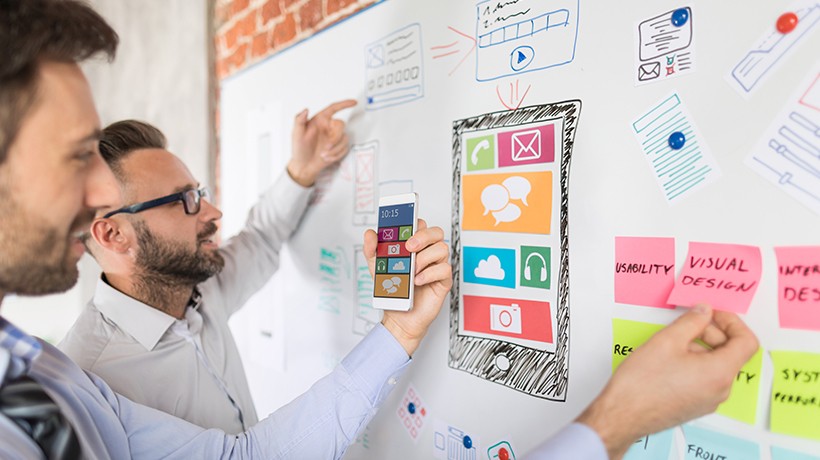Why Mobile-First Learning Matters
Mobile phones are no longer just for texting or browsing. They have become a popular platform for learning, fitting into our busy lives, where we use apps every day, all the time. However, even though mobile-first learning is available in so many apps, most of them fail to keep users engaged for long. The problem isn't that people don't want to learn on their phones. It's that many apps simply transfer classroom content to a smaller screen without adapting the experience for mobile use. This needs to change. Instructional Designers should start designing with a mobile-first mindset and focus on creating engaging, easy-to-use, and flexible learning experiences that match how people actually use their devices.
But what do learners want? What would it take for them to engage more with mobile-first learning? They prefer quick and short learning, interactive features that make it enjoyable, and the ability to learn wherever and whenever they choose. Mobile devices are ideal for this purpose, as they also enhance accessibility by providing educational resources to people who might otherwise face barriers, such as those in rural areas or busy professionals. Therefore, mobile-first learning is essential. For educators, businesses, and app developers, this means they must reach learners on their phones, deliver content, and keep them motivated and engaged. Let's see how you can do that and what you should pay attention to when designing for mobile learning.
Key Principles Of Mobile-First Learning Design
Simplicity
People don't like it when mobile learning is too cluttered. If you open an app and see too many buttons and long text, you might just close it. That's why a simple design is really important for mobile apps. This includes clear screens, short text, and easily visible icons. The easier it is for someone to use it right away without spending much time figuring things out, the better. It's also important to make complicated ideas simple. Instead of long sentences, use short ones or pictures. Similarly, break down tough topics into manageable parts that users can examine one at a time. The simpler the design, the more likely people will keep using it.
Microlearning
Mobile-first learning is most effective when content is divided into small, easily understandable pieces. This is known as microlearning and involves offering short lessons that learners can complete in just a few minutes. Why is this effective? Because it fits how we use our phones. We check notifications multiple times throughout the day; therefore, by creating lessons that take only 3–5 minutes, we help learners integrate education into their daily lives without feeling overwhelmed. Microlearning also benefits memory. Learning in short sessions helps people remember information more effectively than trying to absorb everything at once.
Engagement First
The value of an educational app doesn't depend on how much information it offers. Simply offering information does not guarantee that people will learn. What really matters is how engaged the learner is. An engaged learner pays attention, interacts with the material, and remembers what they've learned. So, instead of simply presenting content, focus on short quizzes, puzzles, challenges, and stories and encourage interaction overall.
Personalization
A generic approach doesn't work well in education, especially when applied to mobile apps. Today's learners want learning tools that adapt to their needs. The key to this is personalization. This can be as simple as allowing learners to set goals for what they want to learn and track their progress. Alternatively, your mobile app can utilize smart technology to suggest the next lesson based on users' current knowledge. Little things, such as notifications to cheer them on when they finish lessons or reminders about lessons they haven't completed, make the app feel more personal as well.
Offline Access Design
Not everyone always has access to fast and stable internet. Learners in rural areas, developing countries, or those commuting often struggle with connectivity. That's why designing for offline access is a key principle in mobile-first learning design. An app that allows users to download lessons or resources for offline use ensures they can keep learning no matter where they are. It also removes frustration, since nobody wants to lose progress just because the connection dropped.
Feedback Loops
Imagine taking a course where you complete lessons but don't know how well you're doing. You would probably lose interest quickly. That's why feedback loops, which provide clear and instant responses to learners' actions, are important in mobile-first learning design. Feedback can be a green check mark for a correct answer, a brief explanation for a wrong one, progress bars, or rewards like points and badges. These small recognitions give learners a sense of accomplishment and encourage them to keep going.
Accessibility
Finally, mobile-first learning design should always consider accessibility. This means creating apps that work for learners of all abilities and needs. Simple steps, such as adding captions to videos, offering text-to-speech options, using high-contrast visuals, and ensuring navigation is screen-reader friendly, make a huge difference. Accessibility shows that you respect learners and make education available to everyone. After all, mobile learning is all about inclusivity, and that isn't possible without accessibility.
How To Design Engaging Mobile Learning Apps
Gamification
When you hear "gamification," you might think of badges and points popping up when you click something. While these features are exciting, gamification is more than just adding games to the learning process. It's about making learning fun by helping users feel like they are making progress and getting rewards. If you want to add gamification to your app, think about these questions:
- Does this reward make the learner feel proud?
- Does it help them keep going?
- Does it help with learning, or is it just for fun?
Effective gamification makes learning feel like a journey, complete with milestones, small successes, and motivation. Be careful, though: when gamification is done wrong, it feels like you're tricking users into learning, and learners can easily tell the difference.
Interactive Elements
Nobody enjoys passive learning, especially on a mobile device. If your app looks like a PDF version of a textbook, you will lose users quickly. Engagement comes from interaction, which basically involves giving learners tasks to do, not just things to read or watch. On mobile, you have many tools to make learning interactive. You can leverage swiping by using flashcards or yes/no questions; tapping by letting users choose answers or explore materials; dragging and dropping by creating matching exercises or building sequences; quizzes by offering quick checks to confirm understanding; and lastly, scenarios with "choose your own adventure" lessons where decisions shape outcomes. These features make the experience enjoyable and help reinforce learning. The more someone interacts with the content, the more likely they are to remember it.
Social Learning
Learning is usually not done alone. Learners share ideas with peers, discuss problems with colleagues, or ask friends for help. Mobile-first learning can create that sense of community through social features. This might include discussion boards for sharing insights and questions, peer feedback where learners review each other's work, group challenges that promote teamwork, and leaderboards that add a friendly competitive element. Social learning has two main benefits: it keeps learners motivated, and it helps deepen understanding, as talking or teaching others is one of the best ways to learn. However, not everyone enjoys social features, so it's important to make them optional.
Push Notifications
Many apps send too many notifications, which often frustrates users and can lead them to turn off notifications altogether. If done thoughtfully, push notifications can help engage users effectively. To be useful, notifications should be personal, relevant, and timely. Instead of generic messages, consider gentle reminders when someone misses their usual study time, congratulatory messages when they reach a goal, or reminders related to their specific goals. Notifications should act like a helpful coach, not a bother. If every message adds value, like encouragement, updates on progress, or reminders of goals, learners will be more likely to appreciate them.
Design Psychology
Engagement depends not just on features but also on how the app feels. This is where psychology and design come together. Small choices in visuals, colors, and feedback can greatly impact the user experience. When it comes to colors, using bright and energetic colors can create excitement, while calmer colors help maintain focus. Feedback is also important. This can include simple animations or sounds that play when learners answer correctly, offering them immediate satisfaction. You also need progress bars showing the user's progress towards completing a lesson, which can be very motivating. Lastly, breaking content into smaller steps or screens helps reduce feelings of being overwhelmed and makes tasks seem more manageable.
Goals And Milestones
Engagement depends on motivation. Why should someone use your app every day? This can be achieved through clear goals and milestones that help learners know what to aim for and feel a sense of success. You can achieve this in several ways. First, encourage users to set personal goals at the beginning. Then, divide lessons into levels or modules so learners can see their progress. And finally, don't forget to celebrate milestones with certificates, badges, or even a simple congratulatory message. The key is to make progress visible. When people can see how much they have achieved and how close they are to their goals, they are more likely to stay engaged.
Conclusion
The best educational apps succeed by creating a fun experience, not just by dumping information. People enjoy using their favorite apps and return to them because they feel rewarded or even a bit "addicted" in a healthy way. This is the key to effective mobile learning. It's not only about learning facts; it's about encouraging curiosity, showing progress, and celebrating small victories. When learning becomes something people look forward to, that's when the app is successful.









